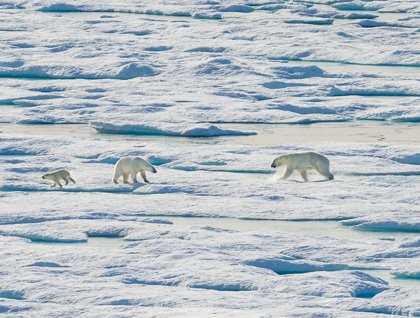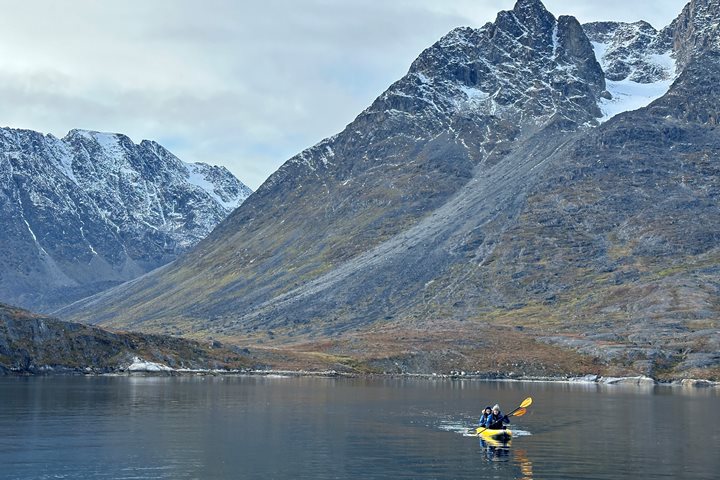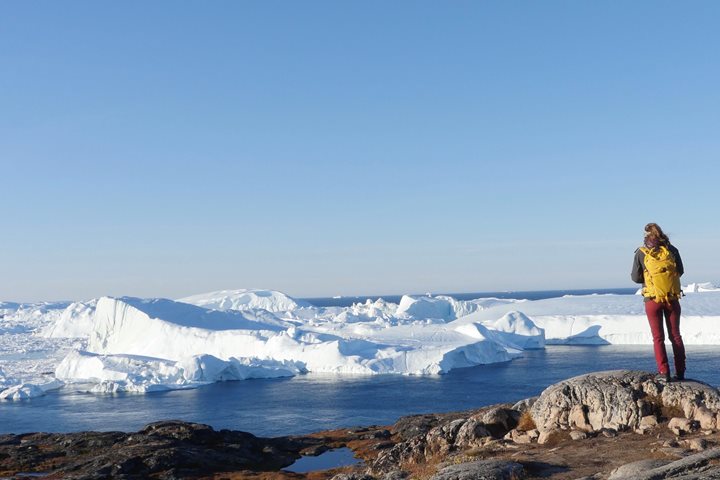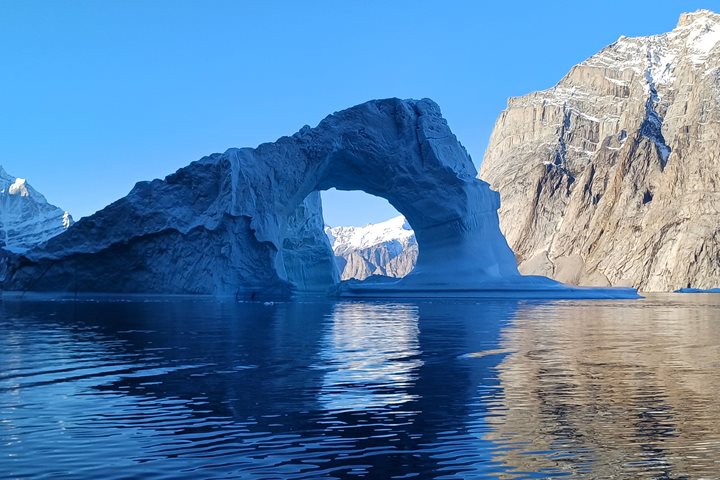Today would be spent exploring the sea ice that has been ever present this season off the east coast of Baffin Island. Unlike the past few years the ice this year is widespread and thick. It shows that ice trends in Polar Regions also have cycles within them. The sea ice in the Arctic is a major player in the ecosystem. The underside of the ice is a fertile ground for microorganisms to grow during the fall and winter only to be let loose in the spring and summer as the ice melts, releasing huge amounts of material that will feed plankton that in turn will feed invertebrates and then fish which feed seals that become prey of polar bears. The charismatic megafauna that is the polar bear would be our quarry for the day. What we didn’t know at the outset was that the behavior we would witness would show us the power and the drama of this iconic species.
The weather was perfect for searching and viewing. The spotters on the bridge were finding bears, some close and some far, some interested in the ship and some not. But it was the sighting of a male bear near the flow edge, and another spotting of a female and cub nearby that would rule the day. At this time of year bears are hard pressed to get enough fat to survive the lean fall until the ice reforms and they can search for seals. Some bears are fat enough to make it until autumn and winter, some are not. The male we saw was plenty big, the female had a young cub who was also healthy. As we approached the male gave chase for a short time and the female and cub moved off. The speculation at the time was that the male may have had a kill, or dead seal, nearby that the female wanted to get a few scraps from. After the male stopped pursuing the female and her cub, she didn’t keep fleeing but rather stopped. Once again the male advanced and this time the chase ended badly for the female and cub. The cub fell into a blue water pool on the sea ice and as the male approached the female attempted to protect her cub had no choice but to flee. The male dispatched the young cub quickly. As the ship was maneuvered around a ridge in the ice we could see that the male was in fact eating the cub. This cannibalistic behavior has been witnessed by the Inuit of the Arctic for generations, but not by the casual visitor to the Arctic on an expedition vessel. It was a true once in a lifetime experience that none of us will ever forget.
We saw more bears during the day, ending up with a dozen or so sightings, but the visceral memory of the male’s behavior showed us what these bears are capable of in order to survive.







